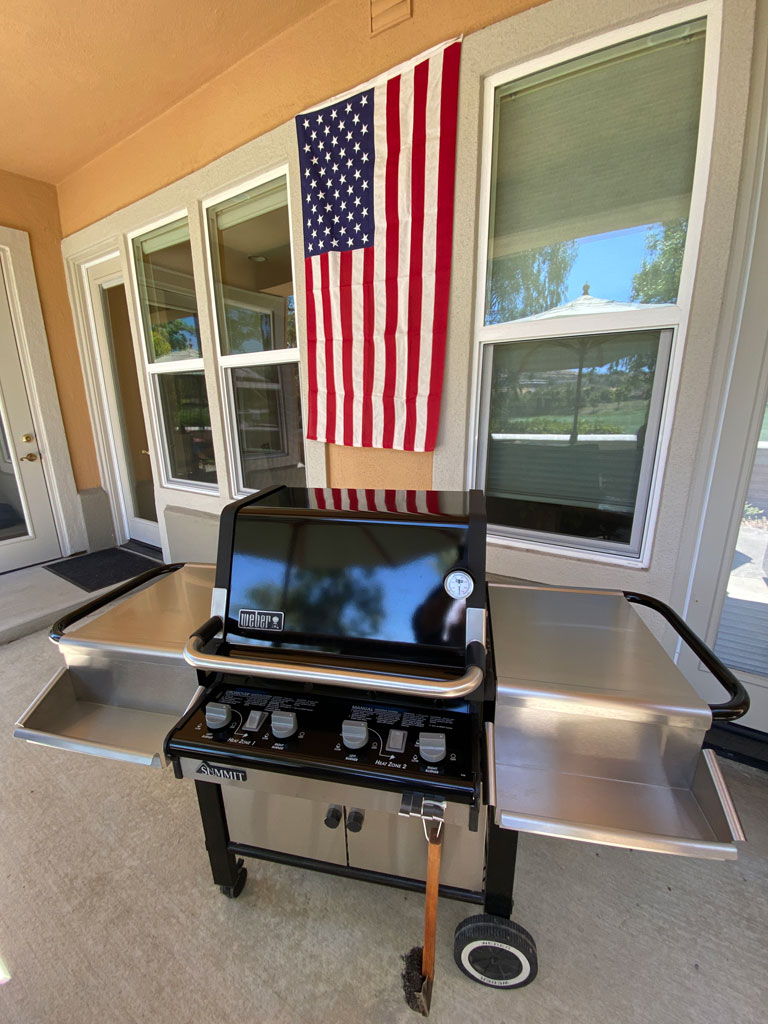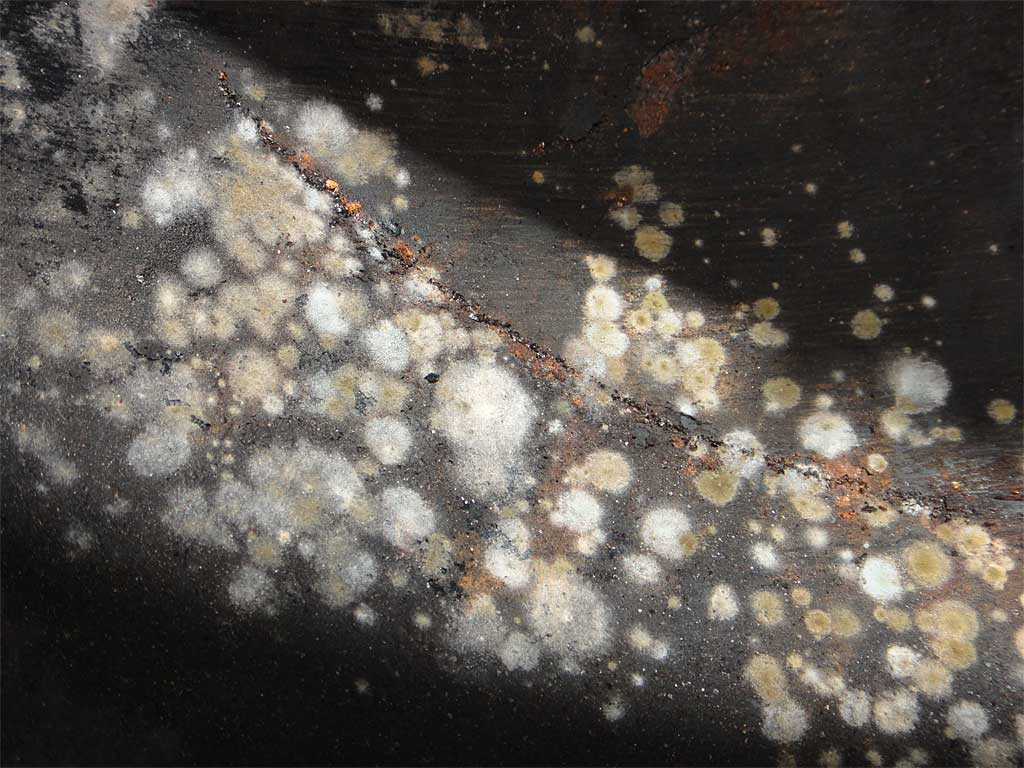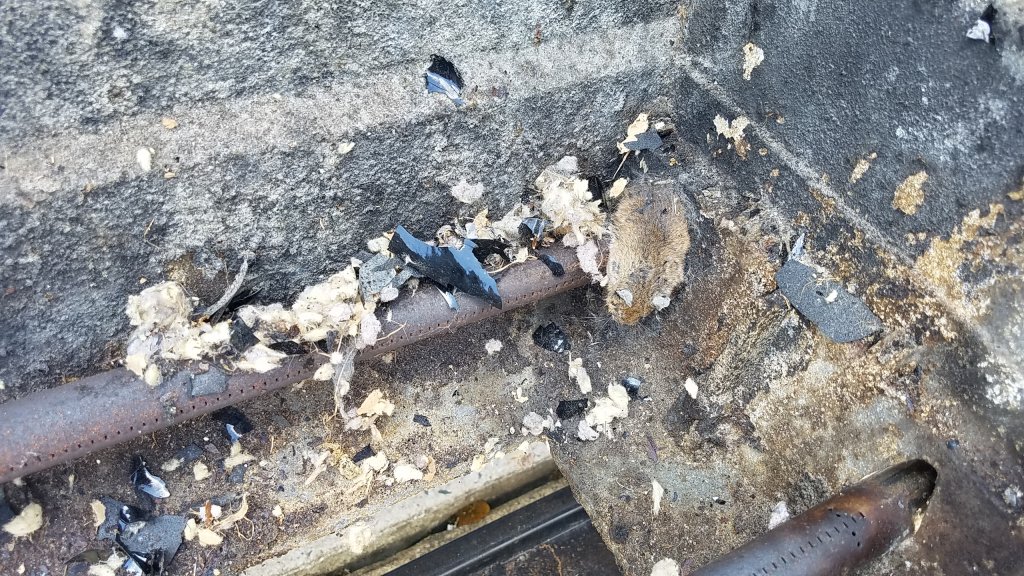You’ve got your steaks seasoned and ready for the grill. You go out to the patio, remove the grill cover, and open the lid.
What greets you is a colony of fuzzy white/green mold on the grates and certain areas of the firebox. Or worse, a fuzzy creature of a different sort, the kind with eyes and nose and whiskers and tail, that’s sitting on the Flavorizer bars, staring up at you through the cooking grates, just as surprised to see you as you are to see him.
Put those steaks back in the refrigerator. You’ve got work to do before you’ll be ready to cook.
It’s no fun to find mold or a live or dead critter in your grill, but it happens. I’ve discovered a live rat making its home inside the cookbox of my gas grill, with feces and urine and footprints all over the exterior of the grill. Gross, for sure, but no reason to throw your grill to the curb.
Both mold and critters thrive on the grease and bits of leftover food found in a dirty grill. For mice and rats, it’s also about building a safe, cozy home within the confines of your grill.
So what should you do to put your grill back into service? And how do you prevent it from happening again in the future?
Read on to find out.
Step 1: Clean The Inside Of The Grill
It’s a tough job, but someone’s got to do it. And unfortunately, that someone is you.
Start by performing all of the interior cleaning steps found in my Deep Cleaning Your Weber Gas Grill post. The tools and supplies needed are listed in the post.
During some of these steps, you’ll want to wear disposable gloves and perhaps a mask for your safety.
- Scrape/brush the grates
- Scrape the Flavorizer bars
- Scrape the upper firebox
- Clean-out the igniter boxes (if applicable)
- Clean the burners and crossover tubes (if applicable)
- Scrape the lower firebox
- Brush the inside of the lid
- Clean the bottom tray and drip pan
Now reassemble the grill in preparation for the next step.
Step 2: Burn-Out The Grill
Run all burners on HIGH for 30 minutes to burn-out the grill. Be careful, the grill will get very hot. Some parts like the Flavorizer bars may glow red!
After 30 minutes, turn off the grill and let it cool for a couple of minutes before carefully opening the lid and brushing the grates again with a clean brush (not one fouled from the clean-out process).
Now close the grill and let it cool completely. Once cool, do another quick brush-down of the inside of the grill, including grates, Flavorizer bars, the inside of the lid, and the cookbox down into the bottom tray and drip pan. Clean-out the tray and pan and you’ve completed the interior cleaning process.
Step 3: Clean The Outside Of The Grill
Referring back to the Deep Cleaning Your Weber Gas Grill post, it’s now time to turn your attention to cleaning the exterior of the grill.
These steps aren’t as important if you’ve got mold because it’s probably confined to the inside of the grill. But if you’ve got critters, they’ve likely crawled all over your grill’s work surfaces, control panel, and lid.
Use a cleaning product appropriate to your grill’s surfaces and give them a good cleaning. Several products are listed in the deep cleaning post.
If you have a porcelain enamel lid, you don’t need to do the 0000 super-fine steel wool cleaning process shown in the deep cleaning post; a simple wipe-down with a cleaning spray will be sufficient. But if your lid is looking shabby, you might as well bite the bullet and give it the full treatment while you’re at it.
You’re Ready To Fire-Up The Grill!

Your grill is now clean inside and out and ready for action. Grill those steaks and enjoy the fruits of your labor.
No, you can never un-see the horrors you saw inside your beloved Weber gas grill, but those images will fade over time as you continue to cook with and enjoy your investment in Weber quality.
What About Hornet Nests?
You’ll often find hornet nests inside grills that have been stored outside undisturbed for an extended period of time. Assuming no one is home, you can simply scrape out the nest, brush off the affected area, do a burn-out of the grill, and you should be good to go.
Preventing Mold & Critters In The Future
Keeping your grill clean is one of the best things you can do to avoid a recurrence of mold or critter infestation.
It used to be my habit that I did not clean my cooking grates after grilling. I waited until the next time I cooked, pre-heating the grill and then brushing the grates.
No more. Post-rat incident, I turn all burners on HIGH and let the grill run for 10 minutes after cooking, then brush off the grates.
With critters, there’s also the issue of access into the grill. Prior to the rat incident, I had a few occasions where mice crawled up the frame—you could see their little footprints on the vertical frame members—where they peed and pooped on the work surfaces and control panel. You can’t do much to prevent this except to set traps around the wheels of the grill to catch them. When I found myself in a cycle of mice visiting the grill, I went so far as to clean the grill, then set a trap on the work surface, replace the grill cover, and wait for the trap to snap! Uncover the grill, use long tongs to move the mousetrap away from the grill, and then quickly dispatch the mouse.
During my rat incident, a close inspection revealed that the invader was climbing up onto the propane tank, then squeezing through a gap between the firebox and the bottom pan to get inside the grill. Once inside, he was able to roam over and under the Flavorizer bars but was trapped below the heavy stainless steel cooking grates.
After giving my grill a deep-clean and doing some rat trapping, part of my routine to keep rats out has been to not attach the propane tank to the scale hanger so they can’t get a leg-up into the grill using that route. I keep the tank disconnected and a couple of feet away from the grill when not in use. When I cook, I move the tank next to the grill and reconnect the hose; after cooking, I disconnect and move the tank.
I don’t know if this really makes a difference, but knock on wood, so far I’ve not had anyone move back into my grill.
Photo Credit: Dead mouse in grill, 2020 by JimV


